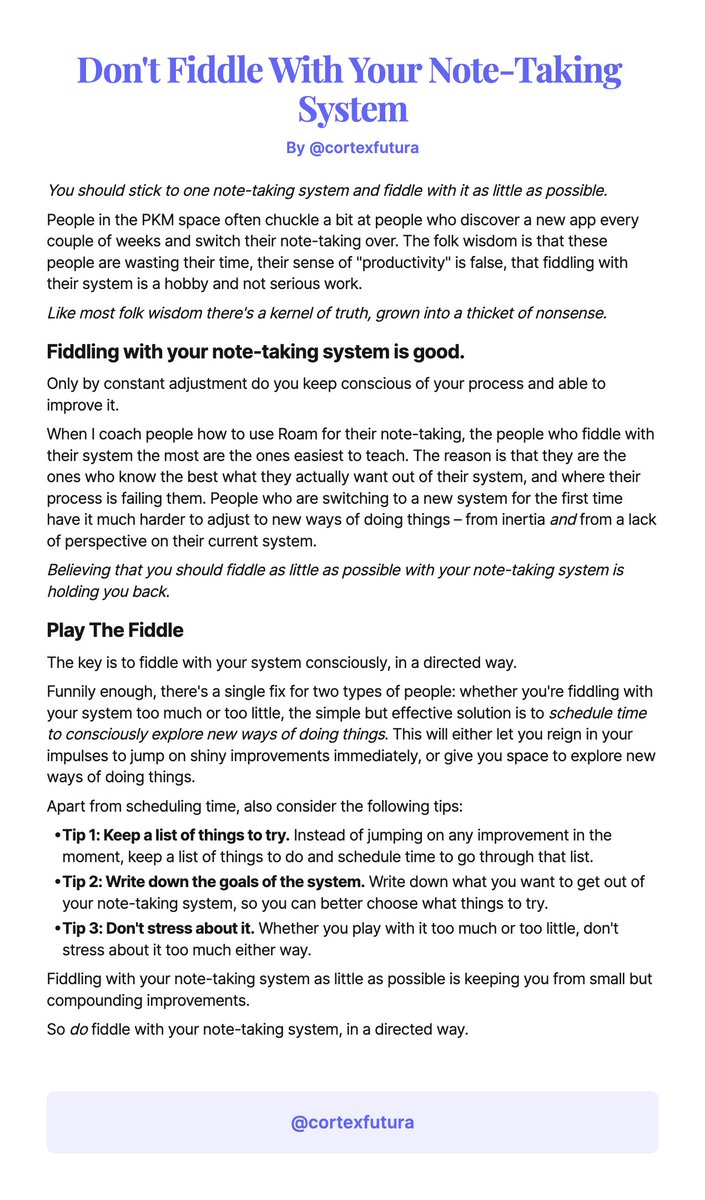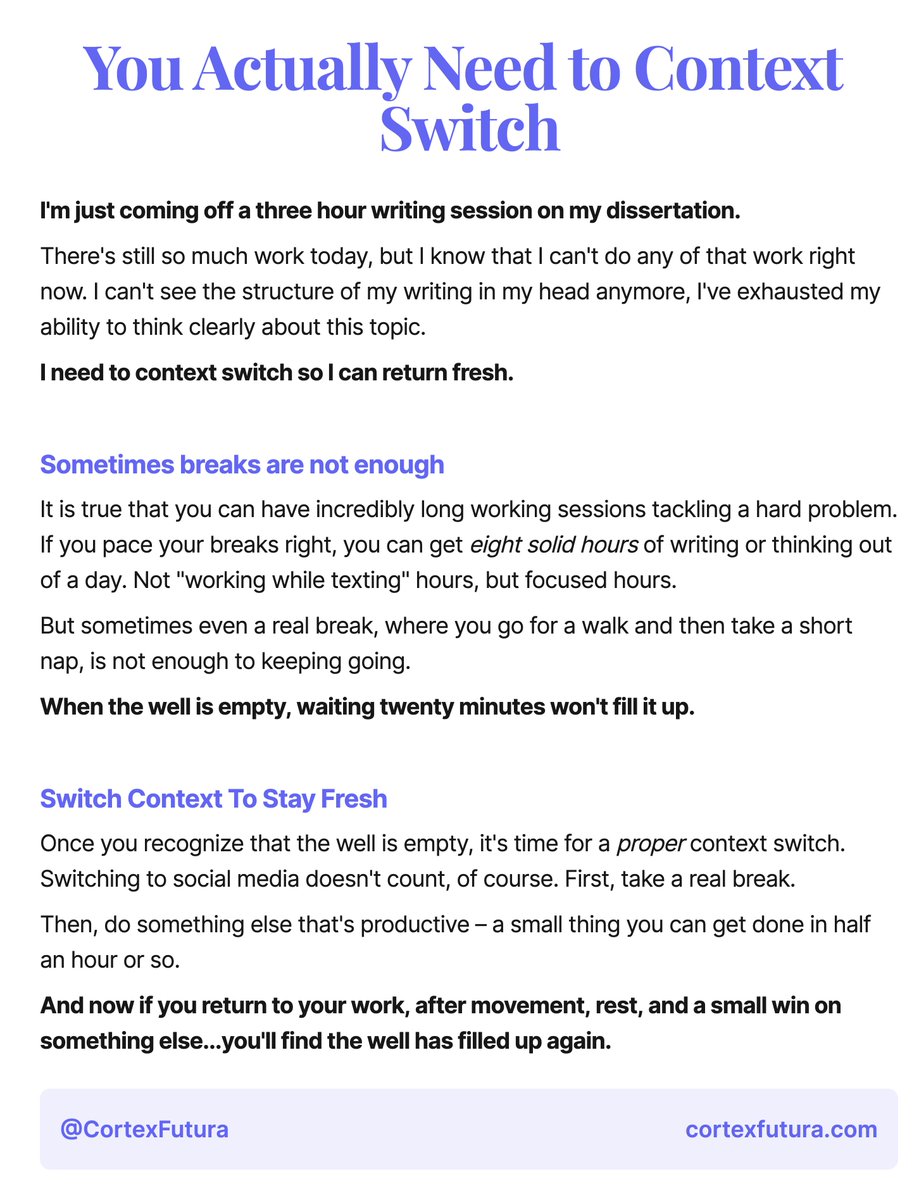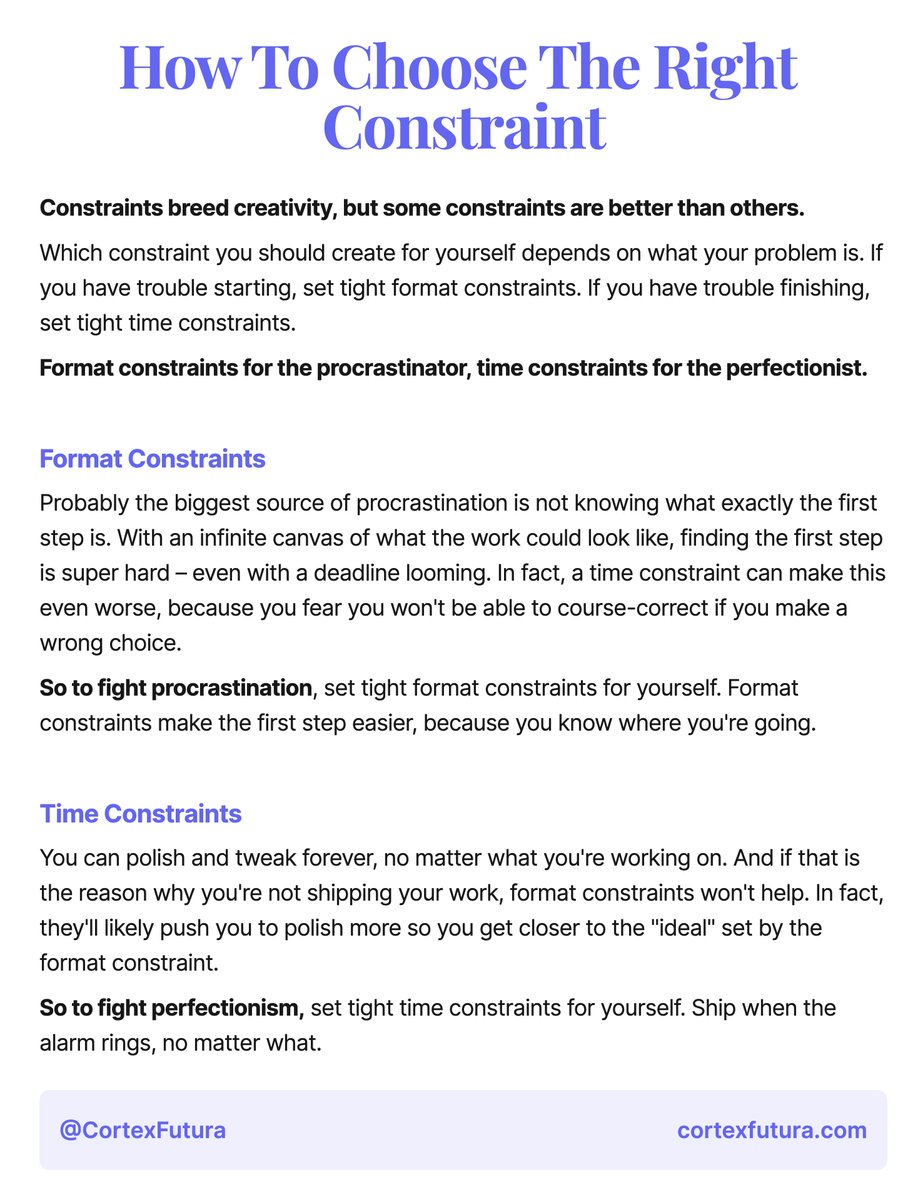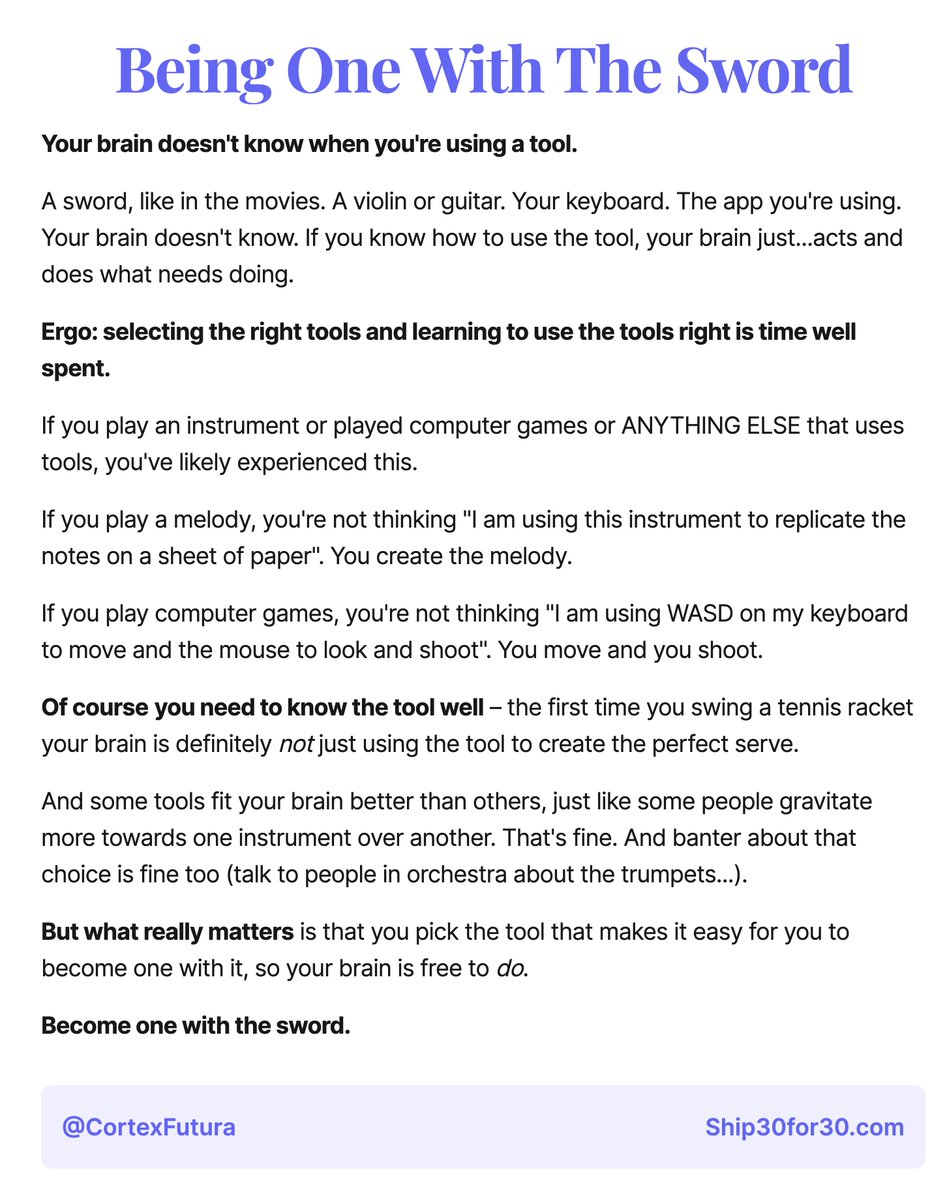
Don't Fiddle With Your Note-Taking System
You should stick to one note-taking system and fiddle with it as little as possible.
That's a myth.
You should stick to one note-taking system and fiddle with it as little as possible.
That's a myth.

In the PKM we space often chuckle a bit at people who discover a new app every couple of weeks and switch their note-taking over. Folk wisdom is that they are wasting time, their sense of "productivity" is false, that fiddling with their system is a hobby and not serious work.
Like most folk wisdom there's a kernel of truth, grown into a thicket of nonsense.
Fiddling with your note-taking system is good.
Only by constant adjustment do you keep conscious of your process and able to improve it.
When I coach people how to use Roam for their note-taking, the people who fiddle with their system the most are the ones easiest to teach.
Only by constant adjustment do you keep conscious of your process and able to improve it.
When I coach people how to use Roam for their note-taking, the people who fiddle with their system the most are the ones easiest to teach.
The reason is that they are the ones who know the best what they actually want out of their system, and where their process is failing them.
People who are switching to a new system for the first time have it much harder to adjust to new ways of doing things – from inertia and from a lack of perspective on their current system.
Believing that you should fiddle as little as possible with your note-taking system is holding you back.
Play The Fiddle
The key is to fiddle with your system consciously, in a directed way.
The key is to fiddle with your system consciously, in a directed way.
Funnily enough, there's a single fix for two types of people: whether you're fiddling with your system too much or too little, the simple but effective solution is to schedule time to consciously explore new ways of doing things.
This will either let you reign in your impulses to jump on shiny improvements immediately, or give you space to explore new ways of doing things.
Apart from scheduling time, also consider the following tips:
Apart from scheduling time, also consider the following tips:
**Tip 1: Keep a list of things to try.** Instead of jumping on any improvement in the moment, keep a list of things to do and schedule time to go through that list.
**Tip 2: Write down the goals of the system. ** Write down what you want to get out of your note-taking system, so you can better choose what things to try.
**Tip 3: Don't stress about it.** Whether you play with it too much or too little, don't stress about it too much either way.
Fiddling with your note-taking system as little as possible is keeping you from small but compounding improvements.
So __do__ fiddle with your note-taking system, in a directed way.
So __do__ fiddle with your note-taking system, in a directed way.
• • •
Missing some Tweet in this thread? You can try to
force a refresh








